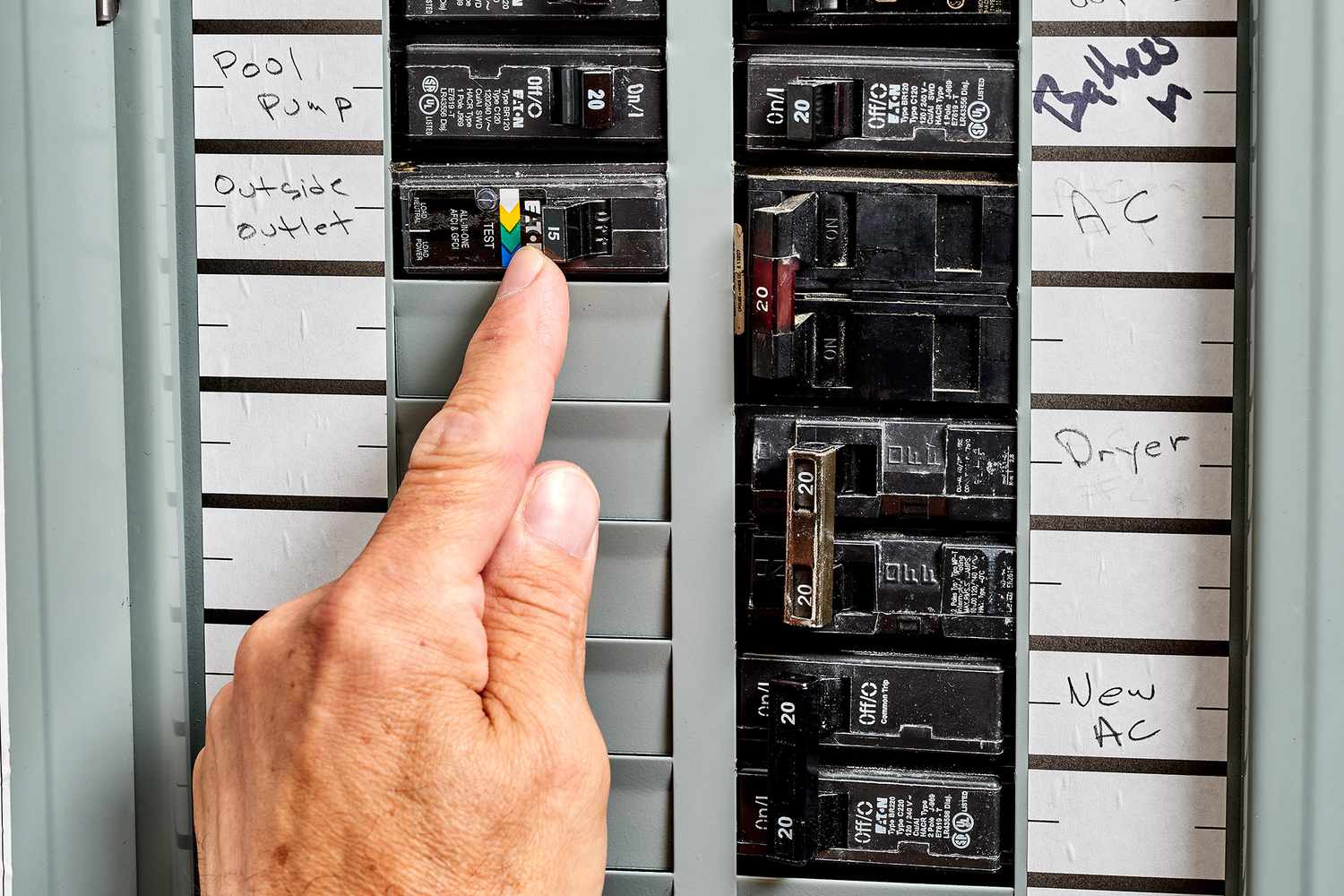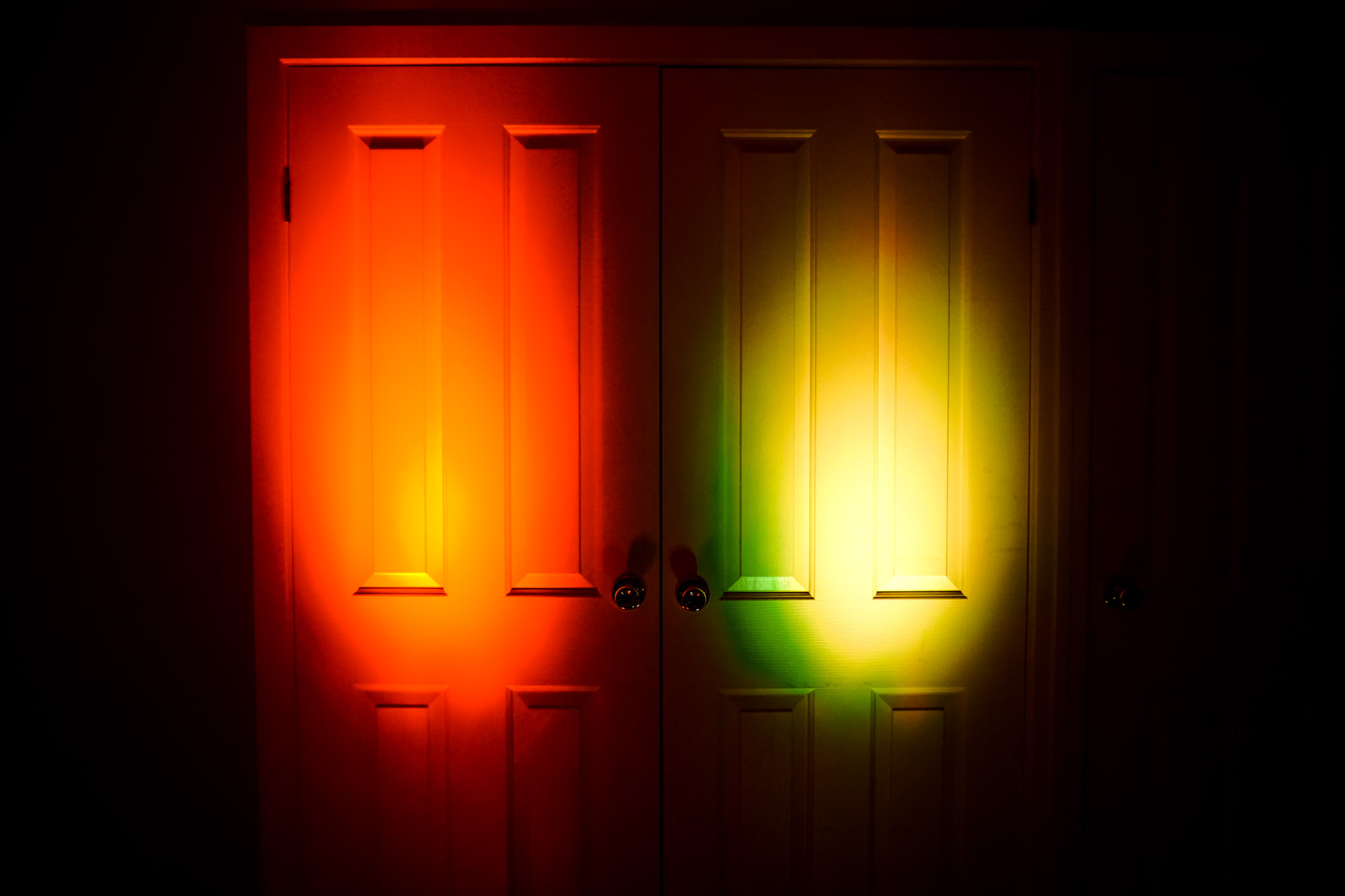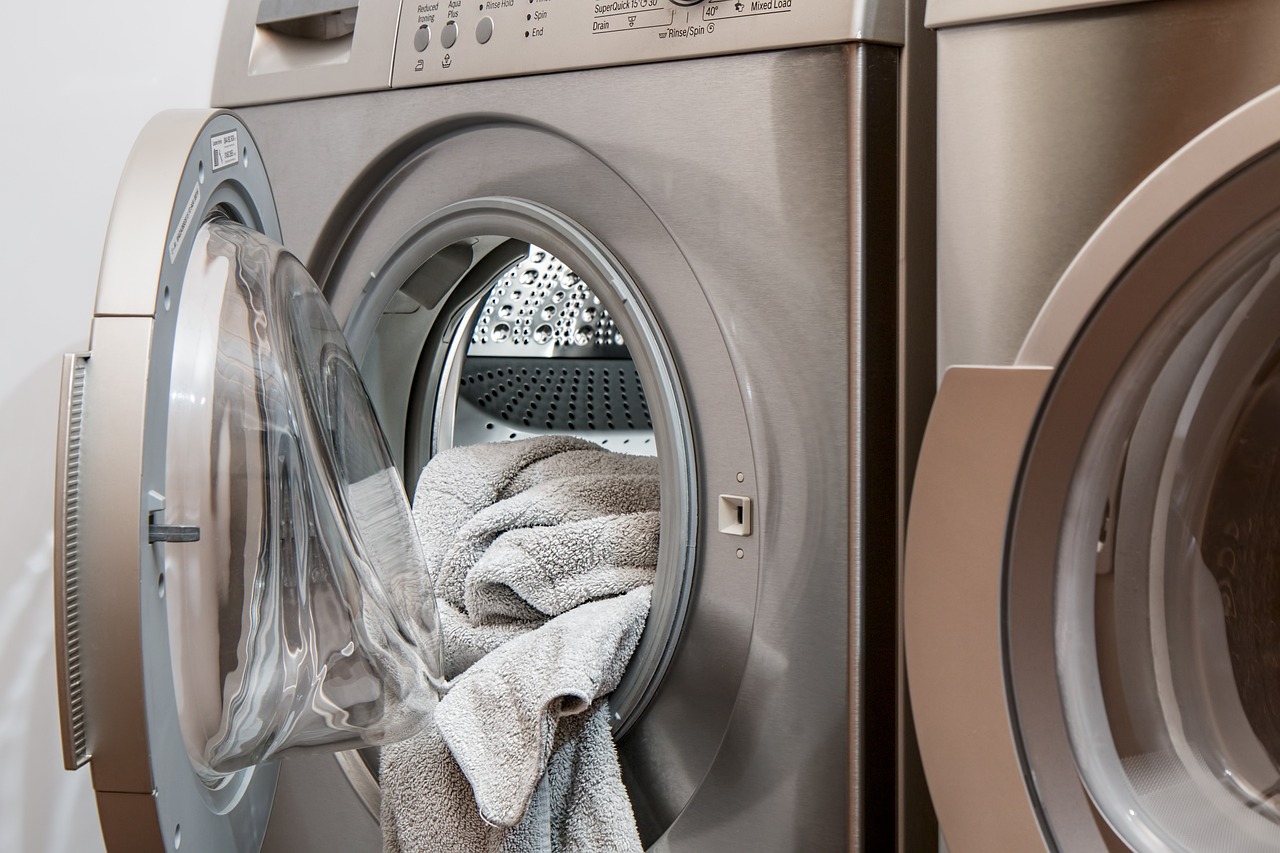Home>Home and Garden>Shocking Discovery: Multiple Dead Outlets Found Despite Untripped Breaker!


Home and Garden
Shocking Discovery: Multiple Dead Outlets Found Despite Untripped Breaker!
Published: January 10, 2024
Discover the shocking truth behind multiple dead outlets in your home despite an untripped breaker. Get expert advice and solutions for your home and garden.
(Many of the links in this article redirect to a specific reviewed product. Your purchase of these products through affiliate links helps to generate commission for Noodls.com, at no extra cost. Learn more)
Table of Contents
Introduction
Imagine the frustration of plugging in your favorite lamp or charging your phone, only to find that the outlet is dead. Despite checking the breaker box, you discover that none of the breakers have tripped. This perplexing scenario often leaves homeowners scratching their heads, wondering what could possibly be causing the issue.
In this article, we will delve into the mysterious world of dead electrical outlets and untripped breakers. We'll explore the common causes behind these perplexing problems, and take a closer look at the underlying issues that could be lurking within your home's electrical system. Whether you're a seasoned DIY enthusiast or simply a homeowner looking to better understand your home's electrical infrastructure, this article will shed light on the potential culprits behind dead outlets and untripped breakers.
So, grab your flashlight and let's embark on a journey to unravel the mystery of dead outlets and untripped breakers.
Understanding Electrical Outlets and Breakers
Electrical outlets and breakers are fundamental components of a home's electrical system, responsible for supplying power to various devices and ensuring the safety of the electrical network. Understanding how these elements function is crucial for identifying and resolving issues such as dead outlets and untripped breakers.
Electrical Outlets
Electrical outlets, also known as receptacles, are the points where electrical devices are connected to the home's power supply. They typically feature two or three slots, with the third slot being the grounding connection. When a device is plugged into an outlet, it establishes a connection with the electrical wiring, allowing the flow of electricity to power the device.
Circuit Breakers
Circuit breakers serve as protective devices that monitor and control the flow of electricity within a home's electrical circuits. They are designed to trip and interrupt the electrical supply when an overload or short circuit is detected, preventing potential hazards such as electrical fires and electrocution. When a breaker trips, it must be manually reset to restore power to the affected circuit.
Relationship Between Outlets and Breakers
Electrical outlets are connected to specific circuits within the home, each of which is protected by a corresponding circuit breaker. In the event of an electrical fault, the breaker associated with the affected circuit will trip, cutting off power to the outlets and devices connected to that circuit. This mechanism safeguards the electrical system and prevents damage to devices and appliances.
Understanding the interplay between electrical outlets and breakers is crucial for diagnosing issues related to dead outlets and untripped breakers. By comprehending the roles of these components and their relationship within the electrical system, homeowners can effectively troubleshoot and address electrical problems that may arise.
In the following sections, we will delve deeper into the potential causes of dead outlets and investigate the perplexing phenomenon of untripped breakers, unraveling the mysteries that often confound homeowners and DIY enthusiasts alike.
Causes of Dead Outlets
Dead outlets, characterized by a lack of electrical power despite no tripped breakers, can stem from various underlying issues within the home's electrical system. Understanding these potential causes is essential for effectively troubleshooting and resolving the perplexing problem of dead outlets.
-
Loose or Faulty Wiring: Over time, the electrical wiring connecting an outlet to the home's circuitry can become loose or damaged, leading to a loss of electrical connectivity. This can result in a dead outlet, as the flow of electricity is disrupted due to poor wiring connections.
-
Faulty Outlets: The outlet itself may be the culprit behind the loss of power. Internal damage or wear and tear can render the outlet inoperable, preventing devices from receiving electrical power. Additionally, outlets that have been exposed to moisture or excessive heat may experience corrosion or damage, leading to a loss of functionality.
-
Tripped GFCI Outlet: Ground Fault Circuit Interrupter (GFCI) outlets are equipped with built-in safety features that trip in the event of a ground fault or electrical imbalance. When a GFCI outlet trips, it can cause downstream outlets on the same circuit to lose power. Resetting the tripped GFCI outlet can often restore power to the affected outlets.
-
Overloaded Circuits: Excessive power draw from multiple devices connected to the same circuit can lead to an overloaded circuit, causing the associated outlets to cease functioning. While circuit breakers are designed to trip in response to overloads, certain outlets may lose power without tripping the breaker due to localized wiring issues.
-
Tripped AFCI Breakers: Arc Fault Circuit Interrupter (AFCI) breakers are designed to detect dangerous electrical arcs and trip to prevent potential fire hazards. A tripped AFCI breaker can result in the loss of power to outlets within the circuit it protects, even if the main breaker remains unaffected.
By identifying these potential causes of dead outlets, homeowners can take proactive measures to address electrical issues and restore functionality to affected outlets. In the next section, we will delve into the investigation of untripped breakers, further unraveling the perplexing nature of electrical anomalies within the home.
Investigating the Untripped Breaker
The perplexing scenario of dead outlets despite untripped breakers often leads homeowners to investigate the underlying causes within their electrical system. When confronted with this enigma, a systematic approach to investigating the untripped breaker can provide valuable insights and potentially unveil the hidden culprits behind the electrical anomaly.
Visual Inspection
Begin the investigation by visually inspecting the breaker panel. Check for any visibly tripped breakers, indicated by a position between the "on" and "off" states. It's essential to note that some breakers may appear to be in the "on" position despite tripping, so carefully toggle each breaker to ensure they are fully reset.
Test for Power
Using a non-contact voltage tester, verify the presence of electrical power at the terminals of the seemingly unaffected breaker. This step is crucial, as it helps determine whether the breaker is indeed supplying power to the associated circuit. If power is detected, the breaker may not be the root cause of the dead outlets, prompting further investigation into the wiring and outlets themselves.
Read more: Ex NBA Star Who Shocked World In 1980 Dead
Reset and Test
Carefully reset the untripped breaker by switching it to the "off" position and then back to the "on" position. This action can help eliminate the possibility of a hidden tripped condition that may not be immediately apparent. After resetting the breaker, test the affected outlets to see if power has been restored. If the outlets remain dead, the issue may lie beyond the breaker and warrant a comprehensive examination of the circuit's wiring and connections.
Circuit Load Analysis
Consider the electrical load on the circuit protected by the untripped breaker. An overloaded circuit, even if the breaker has not tripped, can result in the loss of power to specific outlets. Evaluate the devices and appliances connected to the circuit, ensuring that the combined power draw does not exceed the breaker's capacity. Additionally, inspect for any recent additions to the circuit that may have contributed to an increased load, potentially causing the outlets to go dead.
Professional Assessment
If the investigation yields no conclusive findings or if the underlying cause remains elusive, seeking the expertise of a qualified electrician is highly advisable. Professional electricians possess the knowledge and diagnostic tools to conduct in-depth assessments of the electrical system, pinpointing hidden faults and providing effective solutions to restore power to dead outlets.
By methodically investigating the untripped breaker and considering the aforementioned steps, homeowners can gain valuable insights into the perplexing phenomenon of dead outlets despite untripped breakers. This proactive approach empowers homeowners to address electrical anomalies with confidence, ensuring the safety and functionality of their home's electrical infrastructure.
Shocking Discovery: Multiple Dead Outlets Found
As homeowners continue to unravel the mysteries of dead outlets and untripped breakers, a shocking discovery may unfold when multiple dead outlets are found within the home. This perplexing scenario can amplify the frustration and concern surrounding electrical anomalies, prompting a thorough investigation into the underlying causes and potential remedies.
The presence of multiple dead outlets, scattered across different rooms or areas of the home, signals a widespread electrical issue that demands immediate attention. This alarming revelation often leaves homeowners grappling with questions and uncertainties, as the simultaneous loss of power to multiple outlets defies conventional expectations.
When faced with the shocking discovery of multiple dead outlets, homeowners must adopt a systematic approach to diagnose and address the underlying electrical anomalies. The following steps can guide homeowners through the process of unraveling this perplexing phenomenon:
-
Circuit Mapping: Begin by mapping out the affected outlets and identifying the circuits to which they are connected. This process involves systematically testing each outlet to determine the corresponding circuit and breaker. By creating a comprehensive map of the affected circuits, homeowners can gain a clearer understanding of the scope of the electrical issue.
-
Breaker Panel Examination: Conduct a thorough examination of the breaker panel to identify any tripped breakers that may be associated with the affected circuits. While some breakers may appear untripped at first glance, a closer inspection and reset procedure may reveal hidden tripped conditions that have gone unnoticed.
-
GFCI and AFCI Outlets: Check for Ground Fault Circuit Interrupter (GFCI) and Arc Fault Circuit Interrupter (AFCI) outlets within the home. These specialized outlets are equipped with safety features that can affect the functionality of downstream outlets. Resetting tripped GFCI outlets and AFCI breakers can potentially restore power to multiple dead outlets.
-
Wiring and Outlet Inspection: Inspect the wiring and connections associated with the dead outlets, paying close attention to any signs of damage, corrosion, or loose connections. Faulty wiring and damaged outlets can contribute to the simultaneous loss of power, necessitating repairs or replacements to restore functionality.
-
Professional Assessment: If the investigation into multiple dead outlets yields no definitive solutions, seeking the expertise of a qualified electrician is crucial. Professional electricians can conduct comprehensive assessments of the home's electrical system, identifying hidden faults and providing effective solutions to restore power to the affected outlets.
The shocking discovery of multiple dead outlets serves as a compelling reminder of the complexities inherent in a home's electrical infrastructure. By approaching this perplexing phenomenon with diligence and methodical investigation, homeowners can unravel the mysteries surrounding dead outlets and take proactive measures to safeguard their home's electrical functionality.
In the quest to restore power to multiple dead outlets, homeowners are empowered to navigate the intricacies of their electrical system, ensuring a safe and reliable power supply throughout their living spaces.
Conclusion
In the realm of home maintenance and DIY troubleshooting, few challenges are as confounding as the discovery of dead outlets despite untripped breakers. This perplexing phenomenon often leaves homeowners grappling with frustration and uncertainty, as the loss of electrical power defies conventional expectations and demands a systematic approach to unravel the underlying causes.
Through this comprehensive exploration, we have delved into the intricate interplay between electrical outlets and breakers, shedding light on the potential culprits behind dead outlets and untripped breakers. From loose wiring and faulty outlets to tripped GFCI and AFCI components, the diverse array of factors contributing to electrical anomalies underscores the complexity of the home's electrical infrastructure.
As homeowners embark on the journey to investigate dead outlets and untripped breakers, a proactive and methodical approach is essential. Visual inspections, power testing, and circuit load analyses are invaluable tools for unraveling the mysteries that often confound homeowners. Furthermore, the shocking discovery of multiple dead outlets serves as a compelling reminder of the intricacies inherent in a home's electrical system, prompting a thorough investigation and, if necessary, the involvement of qualified electricians to pinpoint and resolve hidden faults.
In conclusion, the perplexing nature of dead outlets and untripped breakers underscores the importance of electrical awareness and proactive maintenance within the home. By understanding the potential causes and adopting a systematic approach to troubleshooting, homeowners can navigate the complexities of their electrical system with confidence, ensuring the safety and functionality of their living spaces.
As we conclude this exploration, homeowners are empowered to tackle the enigmatic challenges of dead outlets and untripped breakers, armed with insights and strategies to address electrical anomalies effectively. By embracing a proactive mindset and leveraging the knowledge gained from this journey, homeowners can navigate the intricacies of their home's electrical infrastructure, fostering a safe and reliable living environment for themselves and their families.












